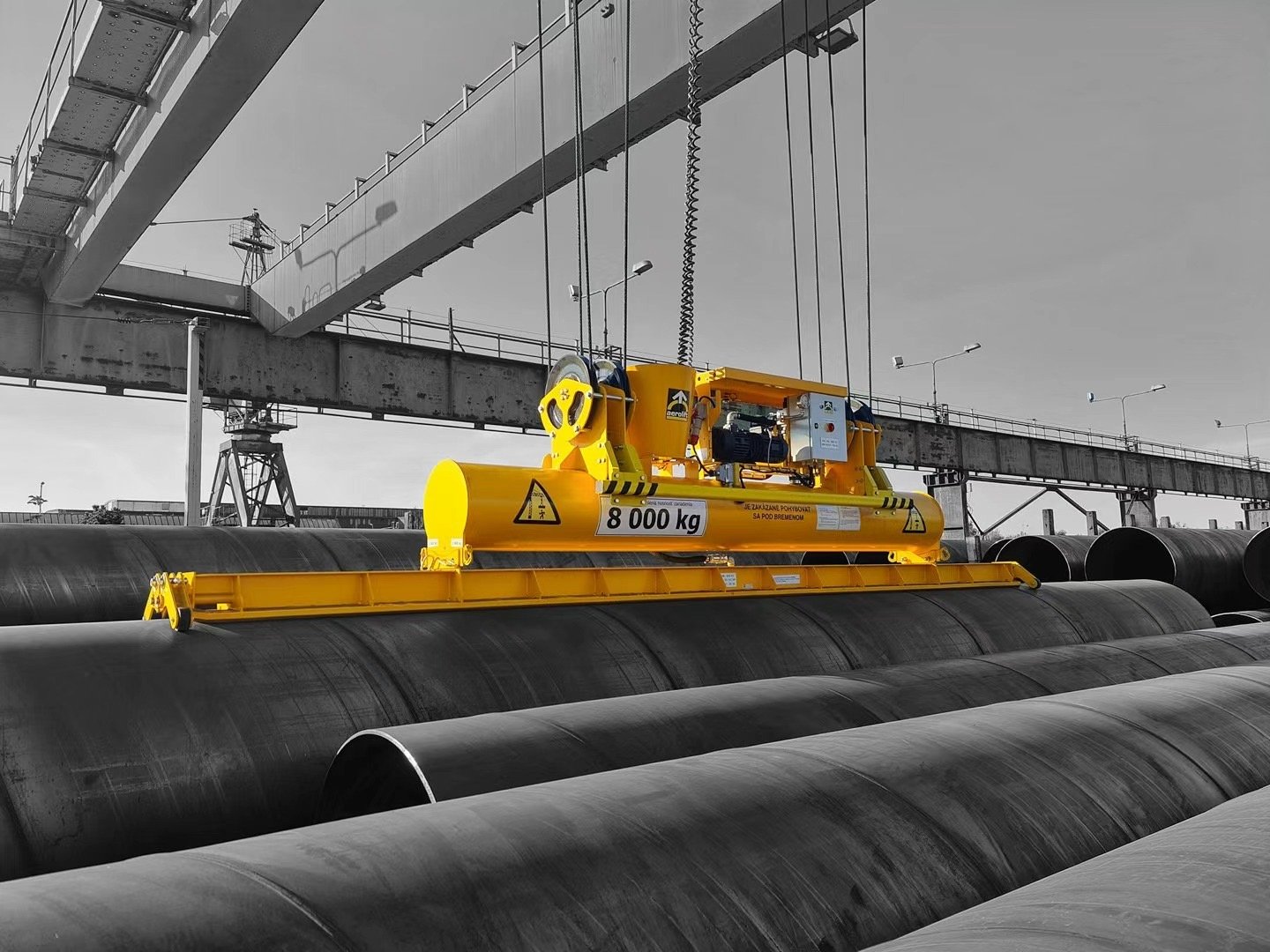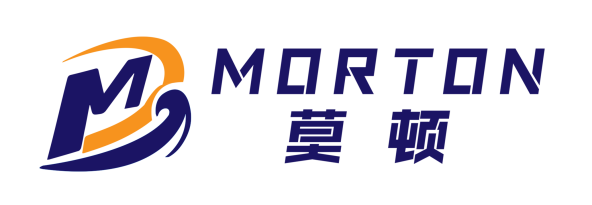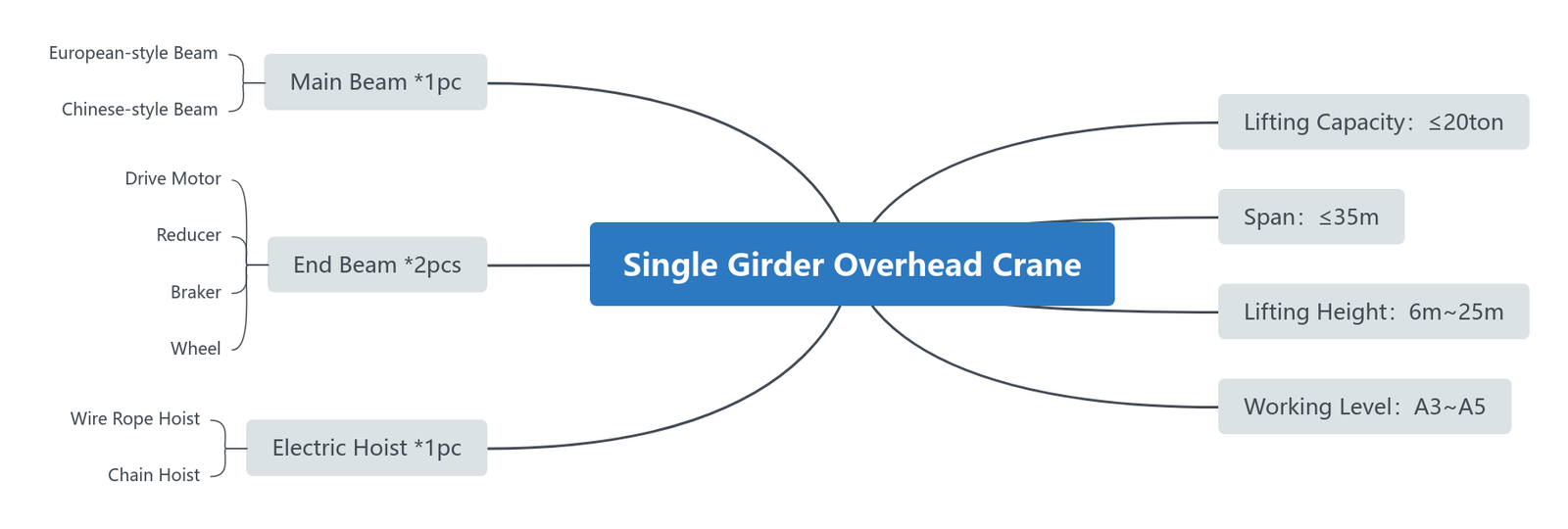Qverhead bridge crane, as the core lifting equipment for material handling in modern industry, are widely used in workshops, warehouses, docks and other places for material hoisting and loading/unloading operations.
MOTCRANE will systematically expound the classification system and technical features of bridge cranes from four dimensions:
- Structural of main beam
- Drive brand
- Application environment
- Functional characteristics
I. Classification by Main Beam Structure
 ♦ Single Girder Overhead Crane
♦ Single Girder Overhead Crane
- Structural features:Composed of one main girder, two end girders and an electric hoist. The main girder adopts I-beam or box girder structure.
- Technical parameters:Lifting capacity usually ≤ 20 tons, span ≤ 35 meters, working level A3-A5.
- Core advantages:Light weight (30% lighter than double-girder), low cost, convenient installation and maintenance.
- Applications:Light workshops, warehouses, assembly lines and other intermittent operation sites.
 ♦ Double Girder Overhead Crane
♦ Double Girder Overhead Crane
- Structural features:Two parallel main beams are rigidly connected by end beams, and are equipped with independent large vehicle running mechanisms.
- Technical parameters:The lifting capacity can reach 500 tons, the span can reach 50 meters, and the working level is A5-A8.
- Special design:It can be integrated with electromagnetic or grab hoisting tools and is equipped with a double trolley system.
- Applications:Heavy-duty working conditions such as steel and metallurgy, shipbuilding and heavy industry, and large equipment manufacturing.

II. Classification by Drive Motor & Reducer Brands

 ♦ Combined Drive
♦ Combined Drive
Each side of the end beam has a drive unit, which drives the wheels on both sides through independent motors, reducers, brakes, and drive shafts.
Mainstream brands:Xindali (motor), Tailong (reducer), Dongli (reducer)
♦ Three-in-one Drive (Mainstream Configuration)
Each side of the end beam is equipped with a drive unit, which drives the wheels on both sides through a three-in-one reducer motor and a transmission shaft.
Technical advantage:Modular design, strong fault isolation, and easy maintenance.
Mainstream brands:SEW, Rossi, Siemens, ABB, Flender…
III. Classified by usage environment
|
Type |
Protection Grade |
Special Design |
Application Field |
|
General Type |
IP23 |
Basic insulation protection | Conventional workshop |
|
Metallurgical Casting Type |
IP54 |
Heat radiation protection plate, double braking system | Steel smelting workshop |
|
Explosion-proof Type |
ExdIIBT4 |
Flameproof motor, non-sparking components | Petrochemical, military industry |
|
Corrosion-resistant Type |
IP55 |
316 stainless steel material, epoxy coating | Marine engineering, chemical industry |
|
Low-temperature Type |
-40℃ |
Low-temperature steel, anti-freezing lubricating oil | Cold chain logistics, polar scientific research |
IV. Classified by functional characteristics
 ♦ Electromagnetic overhead crane
♦ Electromagnetic overhead crane
Integrated electromagnetic suction cup lifting gear, equipped with cable drum system
Suitable for handling ferromagnetic materials such as steel plates and profiles
 ♦ Grab bucket overhead crane
♦ Grab bucket overhead crane
Equipped with a grab opening and closing mechanism, it supports bulk material handling operations.
Typical applications: Coal terminals, grain storage centers
Equipped with PLC control system and laser positioning device
It has the functions of automatic anti-sway, precise positioning (±1mm), and load monitoring.
V. Analysis of technical selection factors

Span and gauge:The column spacing(span) of the factory building and the installation height for overhead cranes need to be determined. For double-girder cranes, the maintenance passage also needs to be considered additionally.
Lifting height:The limit position of the hook should meet the passage requirements of the highest equipment.
Working level:(A3~A8)The utilization level of the mechanism and the load state should be determined according to the FEM/ISO standards.
Control mode:Ground operation、Remote control、Cab operation.



